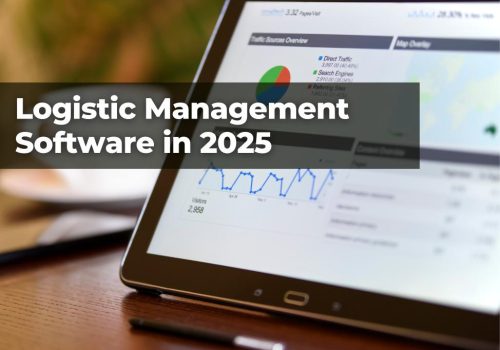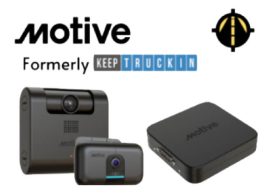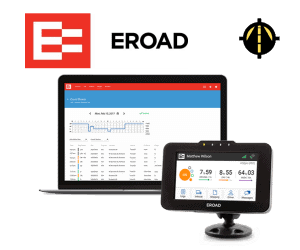
In the period leading up to the ELD device mandate, nearly 67% of the fleets surveyed were compliant, and 22% of fleets became compliant by the ELD compliance deadline.
As the ELDs track the truck driver’s hours of work, location, distance traveled, and perhaps even driver behavior, this enforcement is projected to minimize driving fatigue.
Therefore, this article addresses the multifaceted impacts of ELDs on the trucking industry, including service provision and benefits.
Effect of ELD Devices on Truck Drivers
Truckers drove, on average, up to 60 hours every week before the ELD implementation.
However, these drivers can constitutionally drive up to 55 hours per week since the introduction of the ELD devices. This reduces the number of driving hours.
And, therefore, restricts short-term capacity until all operators, drivers, and shippers transitioned to the ELD.
ELDs impose stricter time constraints. For instance, if a truck is delayed at a shipper/receiver for more than two hours, the driver may lose potential income for the day due to mandatory 10-hour breaks enforced by ELDs. This puts tremendous pressure on shipping companies to adhere to loading times.
Also, a switch to ELDs has prompted numerous truckers to quit the industry. Similarly, after the introduction of the ELD mandate, many shipping companies reported losing truckers.
In fact, 51% of carriers reported losing drivers that didn’t want to work with ELDs devices.
Impact of ELD Devices on Trucking Companies
When the ELD was first introduced, Medium to large commercial trucking companies with a fleet size of over 250 vehicles started with positive outcomes using ELDs.
However, small fleet owners/operators expressed concerns regarding flexibility, costs, and privacy issues.
Small trucking companies and owner-operators would have to pay for the ELD purchase price and recurring ELD service subscription charges.
A standard ELD device’s total expense is calculated at $40 per month per truck.
If the amount of safety features grows, prices will rise, in addition to other features such as front and rear-facing cameras, lane deviation, yaw, and pitch tracking, among many others.
Although $480 in annual spending does not seem absurd, however, the industry’s margins are still tight.
The implementation of the ELD mandate led to a loss of more than 25% of commercial truck drivers, mainly aged 45-49, exacerbating an already significant driver shortage.
Effect of ELD Devices on Trucking Industry Capacity
Independently owned and operated trucking businesses working under the regulatory radar completely abide by the HoS.
And this is anticipated to contribute to a reduction in the productivity of drivers.
The ELD mandate created a capacity shortfall equal to around 200,000 to 300,000 trucks based on forecasts.
Although this prediction could be high, however, ELD devices' effect on the trucking industry is expected to increase yearly.
With a fleet size of 5-10 trucks, 71 percent of independent truckers are the average.
Thus, the gross loss for shipping companies is expected to be about 260,000 to 300,000 vehicles in the future.
It would also result in a significant truck shortage, about 5-8 percent of market losses, and this also translates into higher freight rates.
ELDs have revolutionized the trucking industry, bringing significant changes in driver work hours, company costs, and industry capacity. Despite initial resistance, these devices are now central to fleet management, improving safety, compliance, and efficiency. As the industry continues to adjust to these changes, the full impact of ELDs will become increasingly apparent.
Health insurance premiums
ELD devices have proven beneficial to insurers in the trucking industry. By facilitating smoother road construction and reducing accidents, ELD devices can potentially lower insurance premiums. This is particularly appealing to commercial trucking companies seeking to minimize costs.
Congestion of the Parking Area
The ELD mandate has changed the landscape of parking for truck drivers, reducing the flexibility previously experienced with paper logs. As a result, drivers have to adapt their habits to secure parking with less flexibility.
The cost of lost productivity due to parking issues is significant, costing a commercial trucking company between $1,000 and $5,000 monthly, given the loss of 1-2 loads a month.
Impact of ELD Devices on Road Freight Rates
Freight rates have been affected by the use of ELD devices, much like trucking capacity.
With carriers facing a shortage of drivers to transport freight, they are left with no choice but to raise rates to account for unused overheads.
The yearly rates of spot van line-haul are 2.2 percent higher without fuel surcharges.
Line-haul rates for flatbed trucks are 2.9 percent higher.
There are competitive spot rates, which are negotiated separately between independent carriers and independent truck drivers and brokers.
Contract rate movements, which are long-term arrangements between carriers as well as shippers, have further slowed down.
Due to the shortage of drivers and trucks in the market, the average freight rates have been risen by around 5-10 percent since 2017-2020.
ELD Devices Impact on Productivity
DAT reports indicate that after the ELD regulation was implemented, nearly 67.3 percent of truck drivers participating in the survey say they are traveling fewer miles.
Simultaneously, almost 71 percent reported making less money when they had to stop after 11 hours.
One-day trips are being stretched into two days by bad traffic, delays at docks, or finding it difficult to find parking space. And these eliminate a few hours of their work time daily.
To solve this issue, many major brokers are now requesting Two-driver teams.
Despite any problems they might face on the route, teams can travel twice the miles in a day to guarantee the freight is delivered on schedule.
When a business driver is delayed and so out of driving hours, some large fleets, therefore, managed to find a way to maximize productivity by sending out yet another vehicle to pick up the load.
For one-truck companies, which have little flexibility in their day until their driving hours are over, this is not the case.
Effect of ELD Devices on Cost
While the FMCSA predicts that ELDs would lead to savings of more than $1.6 billion annually on paperwork alone, the reality might not match this prediction.
Implementing ELDs can come with significant costs, with the most common ELD solution costing carriers around $495 per truck - a potentially massive expense for a small to medium-sized company.
Effect of ELD devices on Safety
Safety is a key factor in the implementation of ELDs.
For over three million vehicles on the road, the ELD mandate applies.
That's three million drivers because of fatigue as well as inaccurate HOS logging that could cause fewer accidents.
An FMCSA analysis predicts that, due to driver drowsiness, the ELD device will help stop roughly 20 fatal accidents and 434 injuries annually.
Road Inspections Increase Since 2017
Inspections have increased since 2017, with about 95% performed by state inspectors and the rest by federal inspectors.
These inspections are essential for ensuring truck drivers and trucks comply with the Federal Motor Carrier Safety Regulations (FMCSRs) or the Hazardous Materials Regulations (HMRs).
Serious breaches can lead to out-of-service (OOS) orders for trucks or drivers, requiring them to be addressed before the driver or truck can return to service.
Main Causes of Truck Accidents
Among the riskiest careers in the modern age is truck driving.
A report released a few years back was rated one of the ten deadliest occupations in the world.
To understand how risky it is, remember the fact that mining, logging, and deep-sea fishing were included among some of the other occupations on the list.
By trucks and heavy vehicles, approximately 70% of the goods carried across the U.S. are transported.
These transported goods include raw materials, gasoline, food products, imported goods as well as finished products.
And As per the American Trucking Associations, over 15 million trucks work in the U.S., and over 7.4 million individuals are working in jobs linked to trucking, making it the world's biggest transportation industry.
A U.S. government study showed that 65% of truck drivers' on-the-job injuries were caused by collisions and traffic accidents.
Although truck crashes have many causes.
However, the study concludes that there are so many reasons why truck accidents are much more prevalent than just about every other form of road traffic accident.
- Some of the reason outlined are;
- Speeding and Reckless Driving
- Poor Truck Maintenance
- Unsafe Driving Practices
- Distracted Truck Drivers
- Inexperienced Drivers
- Vehicle Critical Error
- Truck Driver Fatigue
- Weather Conditions
- Overloaded Cargo
- Road Conditions
Truck Accidents Data From 2017 To 2020?
4,136 deaths involving heavy vehicles occurred in 2018 in the united states.
67% of the heavy truck casualties were people in other vehicles.
3,204 among the involved vehicles were tractor-trailers (74 percent), and 1,108 (27 percent) were single-unit trucks.
The overall number of deaths in 2017 involving trucks is 4,115. (21 less than 2018).
The number of miles traveled in the United States by truckers keeps increasing, as predicted.
Drivers driving large semi-trucks drove almost 305,000,000,000 miles in 2018 alone.
In 2019, a total of 2,734 fatal accidents were recorded in the United States involving buses and trucks.
According to a preliminary analysis released in January 2020, 3,087 deaths were reported in those accidents.
In accidents involving big buses and trucks, another 60,818 persons were injured. There was a total of 122,331 destroyed or damaged vehicles.
NHTSA also published confirmatory fatality figures for the first half of 2020.
The figures show that throughout the second quarter of 2020, 8,870 people had died in vehicle traffic collisions, which was a 3.3 percent decline relative to the second quarter of 2019.
Of course, it should be remembered that at the peak of the public health crisis of COVID-19, the second quarter was when stay-at-home directives were in place all over the country.
In the first six months of 2020, the overall traffic level fell by more than 16 percent.
Which ELD Systems Are Most Used in The Industry?
In the ELD device market, Motive (formerly Keeptruckin), Omnitracs, Teletrac Navaman, and Geotab Gand Donlen are among some of the prominent companies.
Besides, these devices and technologies are provided by many regional & local companies.
To gain a strategic edge in the market, companies concentrate on new product innovations. Manufacturers are also focused on bringing value to more advanced tech & hardware applications for devices.
Some of the mosts patronized companies in the ELD market are AT&T Fleet Complete, Blue Ink Technology, CarrierWeb, Donlen, Garmin ELD, Geotab, Motive (formerly keepTruckin), Omnitracs, ORBCOMM, Pedigree Technologies, Samsara, Stoneridge, Teletrac Navaman, TomTom Telematics, Transflo, Trimble, Verizon Connect, Wheels Inc.
In March 2019, for instance, Omnitracs acquired Blue Dot Technologies to expand the business by focusing on advanced fleet management system development.
The companies that supply the fleet management solution concentrate on integrating different features in the units.
Donlen collaborated with an AI technology firm, Nauto, in April 2019 to implement safer AI-based fleet management technologies.
Improve Data Tracking and Analysis by Carriers
As shown in a survey by Fleet Advantage, more than a quarter of major fleet companies said that ELD data is reducing running costs by at least $4,000 annually per vehicle.
Operating expenses were cut by at least $1,000 annually per vehicle by as much as 30% of the participants.
Using data collection to help fleet customers handle lifecycle expenses;
Fleet Advantage spoke to more than 700 fleet owners and executives who run vast fleets to ask them questions about the implementation of analytics, what areas they use analytics in, and what outcomes they have achieved.
Fleets of more than 200 vehicles are operated by over 45% of those surveyed.
Eighty-one percent of participants had no analytical plan for their fleet 5 years earlier, the study found.
Today, 61 percent of fleets employ analytics to measure everything from the vehicle position to repairs to fuel trends on a regular or weekly basis.
The area wherein analytics produced the largest profit margin was fuel data, with 27.5 percent of fleets monitoring how fuel was used by their trucks.
When other core aspects are affected, up to 19 percent of fleet professionals pointed to service and maintenance and driver behavior changes.
Taking full advantage of these technologies would allow you even to cut costs further and make driving safer.
Reduces Fuel Costs
As an ELD will detect unnecessary idle periods and even speeding incidents for trucks, it would offer the chance to reduce vehicle fuel consumption.
You will be able to build incentive packages to enable truck drivers to boost fuel efficiency.
Truck Downtime reduces
You would be able to reap the benefits of all the available vehicles to the best of your ability with the help of ELDs.
Users of the fleet management system would be able to minimize truck downtime and improve the truck's efficiency.
The Aberdeen Group's experiments have shown the importance of ELDs to reducing the downtime of vehicles.
Total Crash Rates Lowers
A study from the Virginia Tech Transportation Institute Center for Truck and Bus Safety showed that;
Vehicle drivers who used E-Logs have a lower average crash rate and a completely avoidable crash rate than trucks that haven't had electronic driver logs.
Help in Regulatory compliance
There are a lot of requirements for the ELD Mandate.
And this makes it easier for a fleet company to comply and be accredited by other regulations, such as the Driver Vehicle Inspection Reports and IFTA.
Cybersecurity Impact on Trucking Industry - Risks and Prevention
ELDs, like any network-connected device, are vulnerable to electronic attacks, interruptions, and compromises.
To mitigate these risks, companies must be diligent in assessing and implementing ELD solutions.
Regularly evaluating data plains, in-built prevention measures, data security flaws, data protection, encryption, and potential risks can help ensure a secure ELD implementation.
Cybersecurity Measures For ELD Systems
Security Updates and Patching: Make sure that your ELD device provider regularly updates the software and patches security vulnerabilities. It's vital to ensure that you're always using the latest version of the software.
Data Encryption: Ensure that your ELD provider uses strong data encryption methods. Encryption ensures that even if data is intercepted, it will not be readable or usable to unauthorized individuals.
Access Control: Implement strict access controls, meaning that only authorized individuals can access the ELD data. This can include password protection, two-factor authentication, and user permissions.
Network Security: Ensure that the ELD is installed on a secure network, and that network security measures, such as firewalls and intrusion detection systems, are in place.
Awareness and Training: Teach your drivers and staff about the importance of cybersecurity and how to recognize potential threats. This can include phishing attempts, suspicious downloads, and unusual activity.
Regular Audits: Conduct regular audits and assessments of your ELD systems and practices to identify potential vulnerabilities or areas for improvement.
Incident Response Plan: Have an incident response plan in place for handling any potential security breaches. This should outline how to contain the incident, who to contact, and how to prevent further damage.
Future Impact and Changes in the Industry
With continuous advancements in technology and regulation, the ELD mandate and its impacts will continue to evolve. The mandate has largely been accepted, and companies have integrated the devices into their operations. However, it is expected that further fine-tuning and revisions of the regulation may occur as more data and feedback become available.
There is also anticipation for how advancements in technology, like AI, IoT, and 5G, may further transform ELDs and the trucking industry at large. For instance, the advent of self-driving trucks could fundamentally change the way Hours of Service are calculated and the way ELDs are used.
In conclusion, the ELD mandate's introduction has brought a significant shift in the trucking industry's operations. It has had its share of challenges but has also opened the door for increased compliance, safety, efficiency, and data-driven decision-making. It's important for all stakeholders, including fleet owners, drivers, and regulators, to continue adapting and leveraging these changes for continuous improvement in the industry.





















 Answer 5 simple questions to request a
Answer 5 simple questions to request a
2 Responses
All Heavy Vehicles must file their 2290 by August 31st of every year. For newly purchased vehicles, form 2290 must be filed by the last day of the month following the month of first use.
Hi Robert, your article very informative particularly, questions you mentioned in prevention section.
Thanks for the information.. KEEP IT UP!!!…